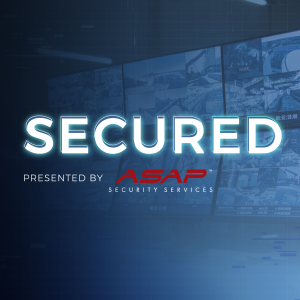
- Podcast Features
-
Monetization
-
Ads Marketplace
Join Ads Marketplace to earn through podcast sponsorships.
-
PodAds
Manage your ads with dynamic ad insertion capability.
-
Apple Podcasts Subscriptions Integration
Monetize with Apple Podcasts Subscriptions via Podbean.
-
Live Streaming
Earn rewards and recurring income from Fan Club membership.
-
Ads Marketplace
- Podbean App
-
Help and Support
-
Help Center
Get the answers and support you need.
-
Podbean Academy
Resources and guides to launch, grow, and monetize podcast.
-
Podbean Blog
Stay updated with the latest podcasting tips and trends.
-
What’s New
Check out our newest and recently released features!
-
Podcasting Smarter
Podcast interviews, best practices, and helpful tips.
-
Help Center
-
Popular Topics
-
How to Start a Podcast
The step-by-step guide to start your own podcast.
-
How to Start a Live Podcast
Create the best live podcast and engage your audience.
-
How to Monetize a Podcast
Tips on making the decision to monetize your podcast.
-
How to Promote Your Podcast
The best ways to get more eyes and ears on your podcast.
-
Podcast Advertising 101
Everything you need to know about podcast advertising.
-
Mobile Podcast Recording Guide
The ultimate guide to recording a podcast on your phone.
-
How to Use Group Recording
Steps to set up and use group recording in the Podbean app.
-
How to Start a Podcast
-
Podcasting
- Podcast Features
-
Monetization
-
Ads Marketplace
Join Ads Marketplace to earn through podcast sponsorships.
-
PodAds
Manage your ads with dynamic ad insertion capability.
-
Apple Podcasts Subscriptions Integration
Monetize with Apple Podcasts Subscriptions via Podbean.
-
Live Streaming
Earn rewards and recurring income from Fan Club membership.
-
Ads Marketplace
- Podbean App
- Advertisers
- Enterprise
- Pricing
-
Resources
-
Help and Support
-
Help Center
Get the answers and support you need.
-
Podbean Academy
Resources and guides to launch, grow, and monetize podcast.
-
Podbean Blog
Stay updated with the latest podcasting tips and trends.
-
What’s New
Check out our newest and recently released features!
-
Podcasting Smarter
Podcast interviews, best practices, and helpful tips.
-
Help Center
-
Popular Topics
-
How to Start a Podcast
The step-by-step guide to start your own podcast.
-
How to Start a Live Podcast
Create the best live podcast and engage your audience.
-
How to Monetize a Podcast
Tips on making the decision to monetize your podcast.
-
How to Promote Your Podcast
The best ways to get more eyes and ears on your podcast.
-
Podcast Advertising 101
Everything you need to know about podcast advertising.
-
Mobile Podcast Recording Guide
The ultimate guide to recording a podcast on your phone.
-
How to Use Group Recording
Steps to set up and use group recording in the Podbean app.
-
How to Start a Podcast
-
Help and Support
- Discover

The Evolution of Facial Recognition Technology in Education
In the rapidly evolving landscape of education, technological advancements have ushered in a new era of tools and innovations, reshaping the way students learn and educators teach. In a recent episode of Secured, hosts Mike Matranga and Mike Monsive delve into the intersection of artificial intelligence (AI) and security within the educational realm.
Matranga and Monsive shed light on the historical narrative of AI in security, emphasizing its transformation over time. They discuss how AI, once viewed with apprehension due to biases inherent in early facial recognition software, has evolved into a precise mathematical formula devoid of racial, gender, or other biases. Initially plagued by negative connotations tied to biases, the evolution of facial recognition technology has led to mathematical precision, calculated based on facial measurements rather than subjective attributes.
The conversation touches upon pivotal moments in the integration of AI-driven security measures into educational institutions. Matranga and Monsive reflect on their collaboration with entities like Santa Fe ISD and Texas City ISD, where proactive facial recognition technology was implemented. Despite facing accusations of racial profiling in the early stages, the effectiveness and efficiency of this technology in enhancing security were undeniable.
Moreover, the hosts address the broader implications of AI in education, stressing the importance of leveraging advanced technologies responsibly. While AI presents opportunities for innovation and efficiency, it also requires thoughtful consideration of ethical and privacy concerns. Matranga and Monsive advocate for a balanced approach, where technological advancements are harnessed to enhance security without compromising individual rights and privacy.
The conversation concludes with a call to embrace the potential of AI in education while remaining vigilant against its pitfalls. By embracing the evolution of AI-driven security measures, educational institutions can create safer environments conducive to learning and growth. Through ongoing dialogue and collaboration, stakeholders can ensure that technological advancements serve the collective goal of enhancing educational experiences while safeguarding the well-being of students and staff.
In essence, the discussion underscores the transformative power of AI in education, highlighting its journey from biases to mathematical precision and the pivotal role it plays in shaping the future of learning and security.
More Episodes
 2025-07-11
2025-07-11
 2025-04-24
2025-04-24
 2025-02-24
2025-02-24
 2025-01-07
2025-01-07
 2024-11-06
2024-11-06
Create your
podcast in
minutes
- Full-featured podcast site
- Unlimited storage and bandwidth
- Comprehensive podcast stats
- Distribute to Apple Podcasts, Spotify, and more
- Make money with your podcast
It is Free
- Privacy Policy
- Cookie Policy
- Terms of Use
- Consent Preferences
- Copyright © 2015-2025 Podbean.com



